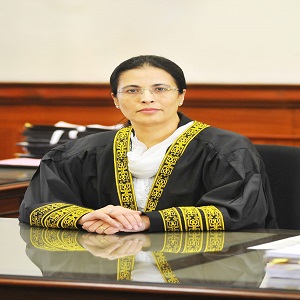
A Landmark Judgment on Cruelty, Consent, and Gender-Sensitive Justice
Introduction
In a historic judgment delivered on 19 September 2025, the Supreme Court of Pakistan in the case of Dr. Seema Hanif Khan v. Waqas Khan (CPLA No. 3268 of 2024) has fundamentally reformed the legal framework governing women’s rights in marriage dissolution. This decision, delivered by Justice Ayesha A. Malik and Justice Naeem Akhter Afghan, represents a watershed moment in Pakistani family law, challenging deeply entrenched patriarchal assumptions within the judicial system and reaffirming women’s dignity, autonomy, and statutory rights under the Dissolution of Muslim Marriages Act, 1939 (DMMA).
The judgment addresses critical gaps in how lower courts assess evidence in matrimonial disputes, particularly regarding cruelty, and firmly establishes that women cannot be deprived of their legally protected rights through judicial sleight of hand. More significantly, it sets a precedent for gender-sensitive judicial reasoning, warning courts that language matters and that judicial pronouncements must uphold constitutional values of dignity, equality, and non-discrimination.
The Case: Facts and Lower Court Findings
The case originated from a marriage solemnized on 31 May 2015 between Dr. Seema Hanif Khan (Petitioner) and Waqas Khan (Respondent). According to the nikahnama (marriage contract), the petitioner’s dower consisted of a 200-square-yard plot in Federal Employees Society, Islamabad, 30 tola gold ornaments, and Rs. 500,000. The nikahnama also stipulated Rs. 10,000 per month as maintenance.
After rukhsati (consummation) on 9 April 2016, the petitioner filed a suit for dissolution of marriage on 4 July 2017 on multiple grounds: cruelty, non-payment of maintenance, and the respondent’s contraction of a second marriage without her consent or permission from an Arbitration Council.
The Family Court-IV, Peshawar granted khula (divorce initiated by the wife) on 22 July 2019 without the petitioner’s consent and ordered her to return the gold and plot, treating the unpaid money as forfeited dower. The Additional District Judge-XI, Peshawar dismissed the appeal on 12 October 2020, and the Peshawar High Court dismissed the petition on 27 May 2024. It is against this order that the Supreme Court granted relief.
The Supreme Court’s Revolutionary Analysis of Cruelty
At the heart of this judgment lies a comprehensive redefinition of cruelty under Pakistani law. The Supreme Court clarified that cruelty is not limited to physical violence but encompasses mental, emotional, and environmental abuse. This represents a significant evolution in judicial thinking.
The court emphasized that cruelty under the DMMA includes: habitually assaulting or making life miserable through conduct (even without physical ill-treatment); association with women of evil repute or leading an infamous life; attempting to force a woman into an immoral life; disposing of her property or preventing her exercise of legal rights; obstructing her religious practice; and, in cases of polygamy, failing to treat wives equitably.
Critically, the Supreme Court held that cruelty is not judged by a standard “so rigid that it replicates a criminal trial.” The question is not whether guilt has been established beyond reasonable doubt, but whether the conduct, viewed in the context of the marriage, is such that the wife cannot reasonably be expected to continue the relationship. This is a subjective test, assessed in light of the effect of behavior on the aggrieved woman, rather than by reference to strict categories or technical rules of proof.
The Correct Standard of Proof: Balance of Probabilities
A fundamental error made by the lower courts was applying an incorrect standard of proof. Marriage dissolution under the DMMA is a civil matter, not a criminal one, and must therefore be assessed on the civil standard of proof: the balance of probabilities. This means the court must decide whose version of events is more likely to be true.
The Supreme Court forcefully rejected the Family Court’s insistence on documentary or medical proof such as FIRs (First Information Reports), hospital certificates, or written complaints. The court noted that domestic abuse is often a “bedroom crime” committed in private with no witnesses. Victims remain silent due to socio-cultural barriers, economic dependency, and lack of information. Dismissing evidence merely because it lacks medical corroboration is contrary to the civil standard of proof.
In this case, the petitioner provided testimony from four witnesses, including herself, who deposed on oath about her abuse. Witnesses testified about visible bruising around her lip from slaps, verbal and emotional abuse from in-laws, humiliation involving pet dogs, anxiety from the respondent’s late-night absences, blocking of her phone, and deprivation of maintenance and adequate food. She supplemented these with a police report. Yet the courts rejected this evidence because she had not been beaten in front of witnesses.
The Supreme Court held that this reasoning was erroneous. Courts must weigh the woman’s entire testimony, including her description of circumstances and the impact on her ability to continue married life, evaluated against the respondent’s defense, on the balance of probabilities. There is no rigid formula for determining mental or emotional cruelty; the essential factor is the conduct’s impact on the woman’s life.
Polygamy as a Ground for Dissolution
The judgment provides significant clarity on Section 6 of the Muslim Family Laws Ordinance, 1961 (MFLO), which prohibits a husband from contracting another marriage during the subsistence of the first marriage without seeking the wife’s consent or, if consent is refused, obtaining permission from an Arbitration Council declared “necessary and just.”
The respondent admitted to contracting a second marriage on 29 April 2017 during the subsistence of his marriage with the petitioner, without seeking her consent or Arbitration Council permission. He was subsequently convicted under Section 6(5) of the MFLO on 26 January 2023 by the Judicial Magistrate-II, Peshawar. That conviction was never challenged and therefore attained finality.
The Supreme Court held that facts admitted in court require no further proof, and the burden then shifts to the respondent to prove he obtained permission. Admittedly, no such permission was sought. Accordingly, the second marriage was contracted in clear violation of the MFLO, constituting an operative and subsisting ground for dissolution under clause (ii-a) of Section 2 of the DMMA.
Notably, the Supreme Court rejected an earlier Peshawar High Court judgment suggesting polygamy might be justified, clarifying that this has “never been the law.” The court reaffirmed that clause (ii-a) remains operative and subsisting, and the respondent’s reliance on that judgment was “wholly misplaced.”
The Khula Conundrum: Consent Cannot Be Presumed
The Supreme Court issued critical guidance on khula (divorce initiated and paid for by the wife), distinguishing it sharply from dissolution of marriage under the DMMA. Khula is grounded in the wife’s consent and autonomy; it cannot be judicially imposed to replace a failed statutory ground.
The petitioner sought dissolution, not khula. Yet the Family Court granted her khula without her asking for it and without explicitly recording her consent. The court justified this by assuming that her unwillingness to reside in the marital home amounted to seeking khula. The Supreme Court held this reasoning fundamentally wrong.
Filing a suit for dissolution does not amount to seeking khula. These are two distinct legal remedies. To infer consent merely from a woman’s unwillingness to reside in the marital home, without considering surrounding circumstances, ignores her right to make her own decision and wrongly presumes her consent. The Supreme Court emphasized that equity cannot be achieved by overriding consent or denying a woman the statutory protections she invokes.
By converting the suit into khula, the lower courts deprived the petitioner of her dower, maintenance, and other protections the law affords her. This practice must cease. Courts must record explicit consent and ensure the woman fully understands the legal consequences before she forfeits her dower.
Maintenance: A Statutory Obligation, Not Conditional on Obedience
The Supreme Court rejected the notion that a wife’s disobedience can justify non-payment of maintenance. The DMMA lists non-payment of maintenance for two years as a ground for dissolution precisely because it recognizes this as a serious breach of a husband’s statutory obligation.
The petitioner testified, supported by her mother’s evidence, that she received no maintenance during the marriage, particularly after December 2016 when they separated. The respondent produced no evidence—neither his own testimony nor witnesses—establishing that he paid the stipulated Rs. 10,000 per month. He submitted no documentary evidence either.
Yet the Family Court rejected her claim by finding her “disobedient and self-deserting” and dissolving the marriage through khula instead. The Supreme Court held this reasoning totally misconstrued and unsupported by evidence. Labeling the petitioner career-oriented, free-minded, or educated in a co-education system does not render her disobedient and cannot nullify the obligation to pay maintenance. The binding legal obligation through the nikahnama cannot be done away with on the basis of presumptions and notions.
Gender-Sensitive Judicial Reasoning: A Critical Warning
Perhaps the most striking aspect of this judgment is its confrontation with patriarchal language and assumptions embedded in the lower courts’ reasoning. Justice Malik emphasized that words used in judicial reasoning matter profoundly. When judgments rely on stereotypes or excuse unlawful conduct, they perpetuate inequality and shape social attitudes in ways that deny women dignity, fairness, and justice.
The Supreme Court identified specific problematic language in the Family Court’s judgment: “disobedient wife,” “self-deserted lady,” “compelled the defendant to contract a second marriage,” and presumptions that only an “obedient wife” deserves maintenance. The court held that these are “social judgments disguised as findings of law.”
The judgment explicitly rejected the characterization of the petitioner’s desire to pursue education or career abroad as “disobedience.” Exercising personal autonomy in educational and professional matters is not misconduct; it is a fundamental right. The lower courts’ continuous focus on the petitioner’s failure to report every incident, provide medical reports, or lodge FIRs, coupled with reasoning that she “could easily have provided a medical report” as a doctor, reflected victim-blaming rather than legal analysis.
The Supreme Court emphasized that concepts like “disobedient,” “self-deserting,” “mummed” (implied as servile behavior), and “served the defendant’s family by heart” should be replaced with language that respects women’s fundamental rights to dignity and choice. The court warned that the continued use of moralistic or gendered terms undermines judicial impartiality and offends constitutional values of dignity, equality, and non-discrimination guaranteed by Articles 14, 25, and 35 of the Constitution.
The Petitioner’s Version: Contextualizing the Evidence
The judgment provides significant detail about the petitioner’s lived experience. She alleged that while residing in her in-laws’ house, the respondent would return home late at night and male servants of his family would freely enter and move about in areas where she was residing, causing her fear and distress. When she complained, he showed indifference. Witnesses testified about visible bruising around her lip from slaps.
She further stated that her in-laws subjected her to verbal and emotional abuse. On one occasion, she was thrown before pet dogs, adding to her humiliation and fear. Even after they moved to separate accommodation, the respondent remained out until 2 or 3 a.m., causing her anxiety. He blocked her phone number, preventing her from contacting him, and failed to provide maintenance or adequate food.
Significantly, the petitioner did not simply abandon the marriage. The record showed that three separate jirgas (community councils) were held to reconcile the parties. After each jirga, the petitioner voluntarily returned to the marital home. It was only in December 2016, after the respondent contracted his second marriage on 29 April 2017 without her consent, that she finally left. She was never subsequently contacted by the respondent or his family.
The Supreme Court found these surrounding facts, on the balance of probabilities, rebut any presumption that she voluntarily left or was a self-deserting wife. The multiple attempts at reconciliation demonstrate her initial commitment to the marriage, strengthening her narrative about the cruelty and mistreatment she endured.
The Respondent’s Defense: Insufficient and Contradictory
The respondent’s defense rested primarily on portraying the petitioner as disobedient, career-oriented, and free-minded, and therefore unwilling to fulfill marital obligations or reside in the matrimonial home. He produced himself as a witness to attest to his good behavior. His other witnesses—jirga members—did not speak about disobedience or the petitioner’s misconduct during their evidence.
Critically, the respondent produced no witnesses to corroborate his stance of good behavior or to testify that he caused no mental or emotional trauma. He submitted no documentary evidence of maintenance payments. The Supreme Court noted that the burden of proof shifted to him once the petitioner established facts through credible evidence. His failure to meet this burden, combined with his admission of contracting a second marriage, rendered his defense fundamentally weak.
The respondent’s argument that he was “more than generous” with the petitioner and attempted to save the marriage could not withstand scrutiny when juxtaposed against allegations of late-night absences, phone blocking, non-payment of maintenance, and failure to protect her from in-laws’ abuse.
Constitutional and International Legal Context
The Supreme Court situated its analysis within constitutional and international legal frameworks. Articles 14, 25, and 35 of the Constitution guarantee dignity, equality, and non-discrimination. Internationally, CEDAW (Convention on the Elimination of All Forms of Discrimination Against Women, 1979) requires states to eliminate discrimination in marriage and family life. Its General Recommendations 19 (1992) and 35 (2017) affirm that gender-based violence including domestic abuse is a form of discrimination demanding effective remedies.
The International Covenant on Civil and Political Rights (ICCPR, 1966) prohibits torture and cruel, inhuman, or degrading treatment. The UN Declaration on the Elimination of Violence Against Women (1993) defines violence broadly as physical, sexual, and psychological, urging states to secure women’s access to justice and remedies in family law.
The Supreme Court’s reasoning aligns Pakistani law with international human rights standards and reflects an evolved understanding that domestic abuse violates fundamental human rights to life, dignity, and security of person.
The Relief Granted
The Supreme Court converted the petition into an appeal and allowed it, setting aside the judgments and decrees of the Family Court and Appellate Court, as well as the High Court’s order to the extent of khula, dower, and maintenance.
The marriage was dissolved on the ground that the respondent contracted a second marriage in violation of law. Consequently, the petitioner was not required to return her dower and was entitled to retain the gold, money, and plot given to her. She was also entitled to maintenance of Rs. 10,000 per month for the period during which the marriage subsisted, to be calculated and paid according to law.
Implications and Legacy
This judgment will have far-reaching implications for family law practice in Pakistan:
First, it establishes that cruelty must be assessed holistically, considering physical, mental, emotional, and environmental dimensions, evaluated on the balance of probabilities without requiring documentary corroboration for every incident.
Second, it clarifies that women cannot be presumed to have consented to khula merely because they wish to leave a marriage. Explicit consent, properly recorded and understood, is mandatory.
Third, it reinforces that maintenance is a statutory obligation that cannot be negated by claims of the wife’s disobedience, particularly when such claims are based on her exercise of autonomy.
Fourth, it firmly establishes that polygamy without spousal consent or Arbitration Council permission remains an operative ground for dissolution, rejecting contrary interpretations.
Fifth, and perhaps most significantly, it demands that Family Courts adopt gender-sensitive judicial reasoning, abandon patriarchal language, and recognize that language shapes perception and perpetuates inequality when used carelessly.
The judgment reflects a judiciary willing to confront its own biases and systemic failings. It acknowledges that domestic abuse remains largely unreported due to socio-cultural barriers and victim-blaming attitudes. By addressing the manner in which lower courts have proceeded in matrimonial cases and the language they have used, the Supreme Court has issued a clarion call for reform of judicial practice and mindset in Pakistan’s family courts.
Conclusion
The Supreme Court of Pakistan’s judgment in Dr. Seema Hanif Khan v. Waqas Khan represents a watershed in Pakistani family law. It goes far beyond merely resolving a matrimonial dispute; it fundamentally reorders the judicial approach to women’s rights in marriage dissolution. By establishing that cruelty encompasses mental and emotional abuse, that consent cannot be presumed, that statutory obligations cannot be negated through patriarchal presumptions, and that judicial language must reflect constitutional values of dignity and equality, the court has set a new standard for the administration of justice in matrimonial matters.
The judgment serves as both a substantive victory for the petitioner and a foundational text for future litigation. It challenges Family Courts to examine not only their findings but also their language, their assumptions, and their willingness to see cases through a gender-sensitive lens. It reminds the judiciary that women’s voices, choices, and rights must be respected as a matter of principle, not presumption, and that the law demands nothing less than substantive justice grounded in dignity, respect, and equality before the law.
As this judgment permeates the lower courts, it promises to reshape matrimonial litigation in Pakistan and restore faith in the judiciary’s commitment to upholding the constitutional and statutory rights of women.
By: Shahzaib Amin Malik
October 26, 2025




